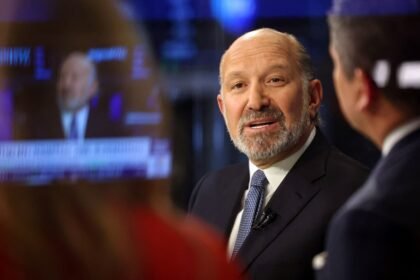Government Shutdown Enters Second Week Amidst Political Stalemate
As the U.S. government shutdown approaches its second week, the Senate remains entrenched in a political deadlock, with little indication of a resolution. The impasse highlights the growing divide between Democrats and Republicans, raising concerns about the potential long-term impacts on federal services and the economy.
Senate Stalemate
Senate Majority Leader John Thune, a Republican from South Dakota, faces a daunting challenge in garnering bipartisan support to reopen the government. With the need for at least eight Democratic votes to pass a funding bill, the situation is further complicated by the consistent opposition from Senator Rand Paul of Kentucky, who has voted against the GOP’s proposals.
Currently, only three Democratic senators-John Fetterman of Pennsylvania, Catherine Cortez Masto of Nevada, and Angus King of Maine-have shown willingness to cross party lines in support of reopening the government. This limited cooperation underscores the increasing polarization in Congress, reminiscent of previous shutdowns that have paralyzed the federal government.
Historical Context
Government shutdowns are not a new phenomenon in U.S. politics. The first significant shutdown occurred in 1980, and since then, there have been numerous instances where political disagreements over budgetary issues have led to temporary closures of federal agencies. The most prolonged shutdown in U.S. history lasted 35 days from December 2018 to January 2019, primarily over funding for a border wall proposed by then-President Donald Trump.
The current situation reflects a similar pattern of partisan gridlock, with both sides entrenched in their positions. The stakes are high, as a prolonged shutdown could lead to significant job losses and disruptions in essential services, affecting millions of Americans.
White House Response
In the midst of the shutdown, President Trump has made headlines with his comments regarding the potential invocation of the Insurrection Act. This controversial law allows the president to deploy military forces domestically in response to civil disorder. Trump’s remarks come as various governors and courts challenge his administration’s crime crackdown initiatives, raising questions about the balance of power between state and federal authorities.
Moreover, Trump has warned that a “substantial” number of jobs could be permanently lost if the shutdown continues, criticizing Democrats for lacking leadership during this crisis. His administration’s focus on job preservation highlights the economic implications of the shutdown, which could exacerbate existing challenges in the labor market.
Political Fallout
The shutdown has also led to political repercussions for some lawmakers. A recent donation from a Democratic senator to a disgraced attorney general candidate has resurfaced, drawing scrutiny and criticism. This incident serves as a reminder of the potential consequences of political alliances and financial contributions in a highly charged electoral environment.
In addition, the ongoing tensions between the White House and Congress have led to accusations of “abuse of power.” Senator Josh Hawley has characterized the investigations led by Special Counsel Jack Smith as reminiscent of Watergate, further fueling the narrative of a politically motivated crackdown on dissent.
Broader Implications
The implications of the current shutdown extend beyond immediate political concerns. The ongoing stalemate raises questions about the effectiveness of the legislative process and the ability of Congress to address pressing issues facing the nation. As the shutdown drags on, public frustration is likely to grow, potentially impacting voter sentiment in upcoming elections.
Moreover, the shutdown’s effects are felt across various sectors, from federal employees facing unpaid leave to businesses reliant on government contracts. The economic ripple effects could hinder recovery efforts in the wake of the COVID-19 pandemic, complicating an already fragile economic landscape.
Conclusion
As the government shutdown continues, the political landscape remains fraught with tension and uncertainty. The inability of lawmakers to reach a consensus reflects deeper divisions within Congress, raising concerns about the future of governance in the United States. With both sides entrenched in their positions, the path to resolution appears increasingly elusive, leaving millions of Americans in limbo as they await a resolution to this ongoing crisis.











